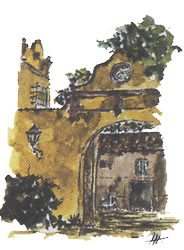Ecotoxicity - Contact test for solid samples using the dehydrogenase activity of Arthrobacter globiformis (ISO 18187: 2024 Standard).
ISO 18187 describes a rapid method for assessing solid samples in aerobic suspension by determining the dehydrogenase activity of Arthrobacter globiformis using the indicator resazurin as a reduction indicator. The principle of the test is based on the inhibition of dehydrogenase activity caused by bioavailable toxic substances in the test sample.
This test can be applied to assess water-soluble and non-volatile contaminants bound to solid materials, such as soils and waste products. Although not the primary objective, the test can also be used to test the effect of non-volatile chemicals. The tests provide results within 6 hours and can be used as screening tests for potentially contaminated materials.
The test uses the bacterium Arthrobacter globiformis, which is added to the solid material and incubated for 2 hours at (30 ± 1)°C. After the contact time, the resazurin dye is added. Due to the dehydrogenase activity of the bacterium, resazurin is reduced to resorufin in the extracellular space. The amount of resofurin can be determined by spectrometry in the presence of the solid material by the emitted fluorescence. The increase in resazurin is determined by measuring the emitted fluorescence every 15 minutes for 1 hour. To determine the inhibition of dehydrogenase activity, the increase in the amount of resofurin in the sample is compared with the increase in resorufin in the control not exposed to the test material. In the presence of toxic substances, an inhibition of dehydrogenase activity should occur with the consequent reduction in the generation of resorufin and the decrease in fluorescence emission.
Results are expressed as a percentage of inhibition relative to the control.
For very toxic samples and chemicals, a series of geometric dilutions (100%, 50%, 25%, 12.5%, 6.25% and 0%) can be tested and the ECxm estimated, i.e. EC50, the estimated concentration that causes a percentage of inhibition of 50% after the exposure time.



